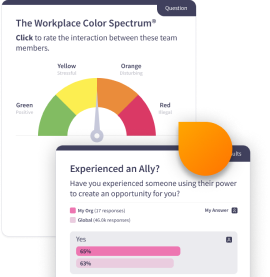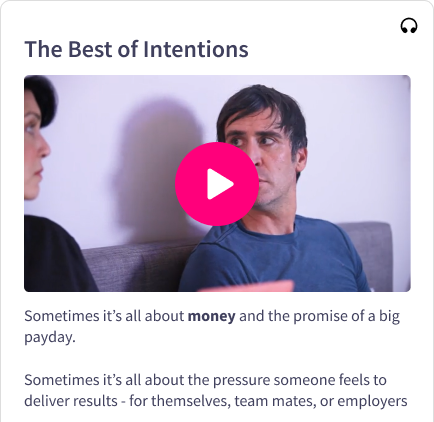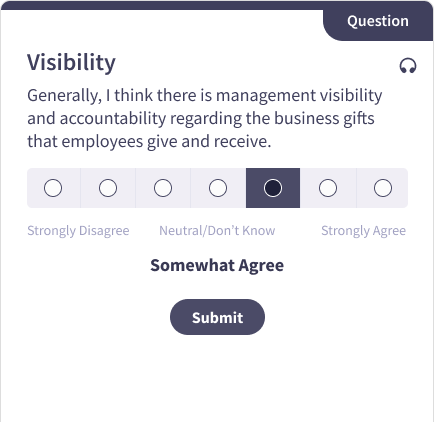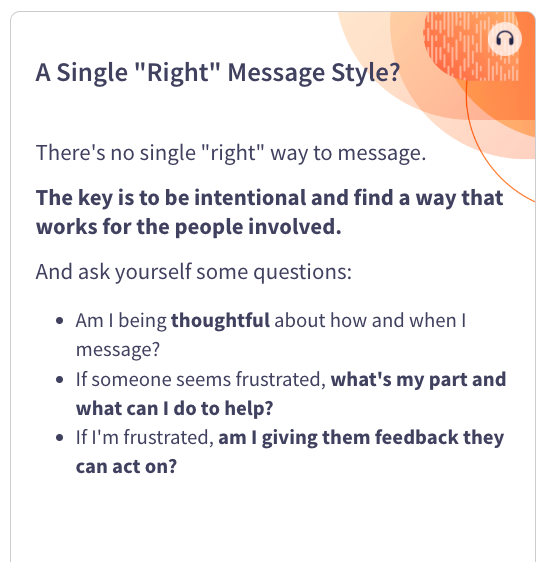
Recognizing Bias That Impacts Culture
Responding to inappropriate comments can be challenging, especially at work. Such behavior might arise due to our blindspots. How can colleagues become allies when confronted with such remarks? Utilizing the Workplace Color Spectrum® can streamline the process, making it effortless to deliver constructive feedback.
Microlesson DescriptionIn this microlesson, we illustrate how co-workers can provide instant feedback in a non-confrontational way when they see inappropriate behavior. If we all give feedback when we see bad behavior, we'll create a more respectful workplace.
Key Concepts- Use the Workplace Color Spectrum® to pause and analyze behaviors, rate the behavior, then take action.
- How to give someone feedback that their behavior is “orange” when they see rude or insensitive behavior.
- Learn how to stop and apologize when you’re aware of saying something inappropriate.
- Why bad behavior can happen because of our blindspots.
This microlesson series is recommended as actionable next steps for every organization that received insights through Emtrain’s Respect Scorecard based on assigned training and courses. Interested in learning how it all works together? Contact us for a personalized free demo of our platform and we’ll walk you through a scorecard and its opportunity to inform your company with actionable insights on how to positively impact your workplace culture.
Microlesson Features
- Employee sentiment pulsing questions that provide leaders with insights into their workforce's core cultural competencies
- Emtrain's Expert Answers tool, enabling employeees to submit anonymous questions about sensitive issues.
- Rich, contemporary video scences illustrating key concepts through realistic scenarios
- A data driven, skill-based approach to eLearning that establishes a shared language for employees.

Related Resources
Related Trainings
Frequently Asked Questions
Below are answers to common questions that employees and managers have about this topic. These FAQs provide a preview of what you’ll learn in this microlesson and why it matters.



